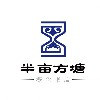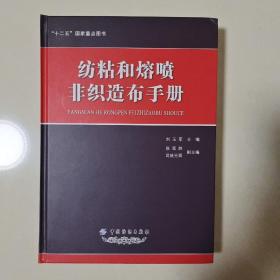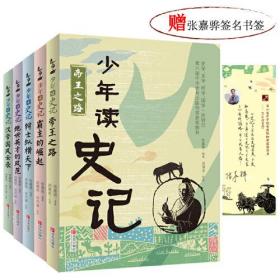
非织造专业英语
¥ 10 2.9折 ¥ 34 九五品
仅1件
作者薛少林、韩玲 著
出版社东华大学出版社
出版时间2013-01
版次1
装帧平装
上书时间2023-07-31
- 在售商品 暂无
- 平均发货时间 暂无
- 好评率 暂无
- 最新上架
商品详情
- 品相描述:九五品
图书标准信息
- 作者 薛少林、韩玲 著
- 出版社 东华大学出版社
- 出版时间 2013-01
- 版次 1
- ISBN 9787566901958
- 定价 34.00元
- 装帧 平装
- 开本 16开
- 纸张 胶版纸
- 页数 211页
- 正文语种 简体中文,英语
- 丛书 纺织服装高等教育“十二五”部委级规划教材
- 【内容简介】
-
《非织造专业英语》涉及非织造材料与工程专业的相关知识,内容包括非织造布的概述、纤维原料、非织造布成网、固网、整理、产品、测试及新技术八个部分,每小节后附有生词表、注释,最后附有总词汇表。
《非织造专业英语》是为非织造材料与工程专业本(专)科学生提供的专业英语教材,也可作为纺织工程等相关专业的“非织造布概论”课程的双语课教材,亦可供从事非织造材料与工程相关工作的人员参考使用。 - 【目录】
-
CHAPTER1
GENERALINTRODUCTION
1.1 DEFINITION OF NONWOVENS
1.1.1 Definition of INDA
1.1.2 Definition of EDANA
1.1.3 Definition of ASTM
1.2 CLASSIFICATION OF NONWOVENS
1.3 DEVELOPMENT OF NONWOVENS
1.3.1 History and Background
1.3.2 Trends in Materials, Process and New Products
CHAPTER 2
FIBERS FOR NONWOVENS
2.1 INTRODUCTION
2.2 CELLULIC NATURAL FIBERS
2.2.1 Cotton
2.2.2 Flax
2.2.3 Hemp
2.2.4 Jute
2.2.5 Ramie
2.3 PROTEIN NATURAL FIBERS
2.3.1 Wool
2.3.2 Silk
2.3.3 Camel Hair
2.3.4 Mohair
2.4 REGENERATED FIBERS
2.4.1 Rayon
2.4.2 Cellulose Acetate
2.4.3 Lyocell
2.5 SYNTHETIC FIBERS
2.5.1 Olefin Fiber
2.5.2 Polyester
2.5.3 Nylon Fibers
2.5.4 Acrylic
2.5.5 Carbon Fibers
CHAPTER 3 WEB FORMATION TECHNOLOGIES
OF NONWOVENS
3.1 DRY LAID PROCESS
3.1.1 Fiber Selection
3.1.2 Fiber Preparation
3.1.3 Web Forming
3.1.4 Laying
3.2 WETLAID PROCESS
3.2.1 Paper and Textiles
3.2.2 Raw Materials
3.2.3 Production Machinery
3.2.4 Special Features of the Wetlaid Process and Its Products
3.3 SPUNLAID PROCESS
3.3.1 Polymer
3.3.2 Spinning and Web Formation
3.3.3 Characteristics and Properties
3.3.4 Applications
3.4 MELT BLOWN PROCESS
3.4.1 Polymer Type
3.4.2 Processing
3.4.3 Web Characteristics and Properties
3.4.4 Process Structure Property
3.4.5 Applications
3.4.6 Comparison of Melt Blown and Spunbond
CHAPTER 4 WEB BONDING TECHNOLOGIES OF
NONWOVENS
4.1 CHEMICAL BONDING PROCESS
4.1.1 Bonding Agents (Binders)
4.1.2 Chemical Bonding Processes
4.1.3 Applications
4.2 NEEDLEPUNCHING PROCESS
4.2.1 Process
4.2.2 Mechanism of Needle Loom
4.2.3 Felting Needle
4.2.4 Types of Needle Looms
4.2.5 Machine Variable
4.2.6 Applications
4.3 SPUNLACING PROCESS
4.3.1 Process
4.3.2 Materials Used in Spunlaced Technology
4.3.3 Parameter Affecting the Product Performance
4.3.4 Properties of Spunlaced Fabrics
4.3.5 Applications
4.4 THERMAL BONDING PROCESS
4.4.1 Binders
4.4.2 Methods of Thermal Bonding
4.4.3 Advantages and Energy Comparison
4.5 STITCH BONDING PROCESS
4.5.1 Batt Bonded by Threads
4.5.2 Stitch Bonding Without Threads
CHAPTER5
NONWOVENS FINISHING
5.1 INTRODUCF1ON
5.2 SURFACE FINISHING
5.2.1 Calendering
5.2.2 Embossing
5.2.3 Pressing
5.2.4 Singeing, Splitting, Grinding and Velouring
5.3 SHAPE FINSHING
5.3.1 Shrinkage
5.3.2 Wrenching
5.3.3 Creeping, Perforating and Slitting
5.4 WET FINISHING
5.4.1 Washing
5.4.2 Dyeing
5.4.3 Printing
5.5 CHEMICAL FINISHES
5.5.1 Antistats
5.5.2 Antimicrobials
5.5.3 Water Repellents
5.5.4 Lubricants
5.5.5 UV Absorbers and Polymer Stabilizers
5.5.6 Flame Retardants
5.5.7 Softeners
5.5.8 Absorbency and Rewetters
5.5.9 Thermoplastic Binders, Resins and Emulsion Polymers
5.5.10 Thermosetting Resins and Crosslinking Agents
5.5.11 Soil Release
5.5.12 Optical Brighteners
5.6 COATING
5.6.1 Chemical Vapour Deposition and Physical vapour Deposition
5.6.2 Electro Deposition
5.6.3 Spray Coating
5.7 LAMINATING AND FLOCKING
CHAPTER 6 PRODUCTS AND APPLICATIONS OF
NONWOVENS
6.1 HEATHCARE AND HYGIENE
6.1.1 Absorbent Hygiene Products
6.1.2 Healthcare and Medical Application
6.2 INDUSTRIAL APPLICATIONS
6.2.1 Automotive
6.2.2 Building
6.2.3 Cable Wrapping
6.2.4 Filtration
6.2.5 Industrial and Institutional Wipes
6.3 PACKAGING AND AGRICULTURE
6.3.1 Packaging
6.3.2 Agriculture and Horticulture
6.3.3 Landscaping Fabric
6.4 GEOTEXTILE
6.4.1 Geotextile Classifications
6.4.2 Geotextile Types
6.4.3 Essential Functions of Geotextiles
5.5 FURNISHINGS
6.6 NONWOVENS IN APPAREL INDUSTRY
6.6.1 Protective Dress
6.6.2 Fashion Apparel
CHAPTER 7 NONWOVENS TESTING
7.1 NONWOVENS CHARACTERIZATIONS
7.2 IESTING STANDARDS
7.3 IESTING CLASSIFICATION AND BASIC TESTS ITEMS
7.4 IESTING METHODS AND TECHNIQUE
7.4.1 Absorbencycapacity Tests
7.4.2 Electrostatic Properties
7.4.3 Flammability and Optical Properties
7.4.4 Permeability and Porosity
7.4.5 Filtration
7.4.6 Strength
7.4.7 Softness
7.4.8 Barrier
7.4.9 Contamination
CHAPTER 8 NEW TECHNOLOGIES FOR NONWOVENS
8.1 NEW PRODUCTS FROM BIOCOMPONENTS
8.2 NANOFIBER NONWOVENS
8.2.1 Electrospinning Process
8.2.2 Properties of Nanofibers
8.2.3 Applications of Nanofibers
8.2.4 Challenges in Nanofibers
8.3 GREEN OR ENVIRONMENTFRIENDLY NONWOVENS
8.4 SMART TEXTILES
8.4.1 Definition of Intelligent Clothing
8.4.2 Nonwoven Confortable Fabrics with Electric Circuits
8.4.3 Stretchable Nonwovens
词汇总表
— 没有更多了 —












以下为对购买帮助不大的评价